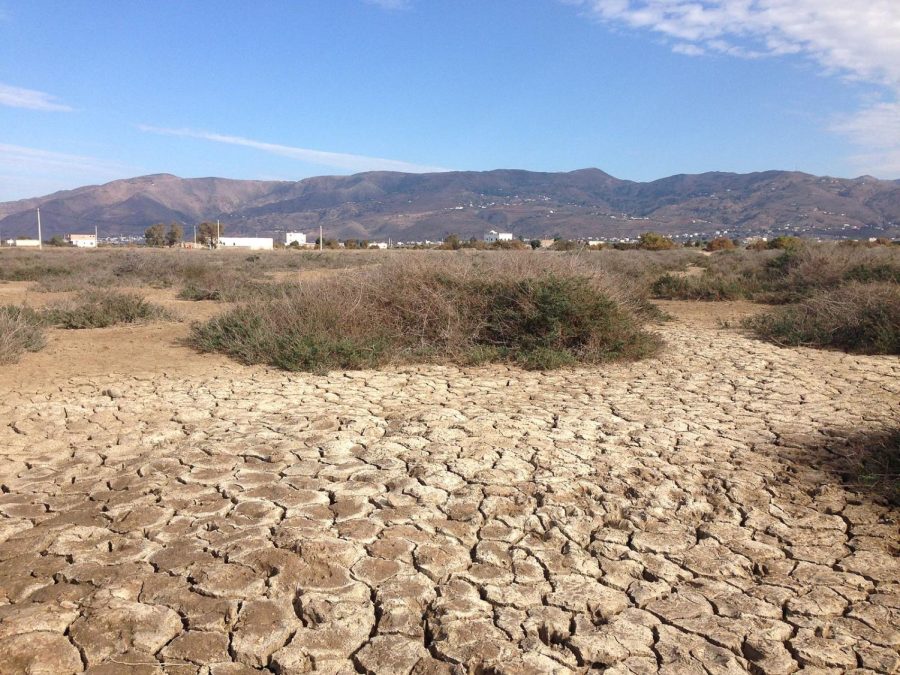84% of the United States suffers from drought-like conditions
November 6, 2022
Prolonged drought conditions in over 84% of the United States may instigate complications to agriculture, energy and supply chains during the coming months.
The U.S. Drought Monitor produces a weekly assessment of drought conditions, along with a map which measures drought intensity across different regions. The latest release on Oct. 27 revealed about 84.46% of the country is facing dry conditions, with nearly 63% in moderate to severe drought. These figures showed the largest distribution of the condition since the monitor began its assessments in 2000.
“Unfortunately, given the expanse of drought and abnormal dryness across the U.S., antecedent dryness led to another week of degradations for many not receiving rainfall, even in areas where temperatures were cooler than normal,” the monitor’s assessment said.
Sea surface temperatures in the central-eastern equatorial Pacific remain below-average according to the Columbia Climate School’s El Niño/La Niña Southern Oscillation Forecast. These temperatures indicate conditions that can lead to more drought in some regions of the contiguous U.S. – even while producing flooding and hurricanes in others.
These conditions, in conjunction with recent economic issues, may propagate further obstacles to America’s provisions of essential food and energy across the country in the winter months to come.
Much of the Midwest had seen large declines in crop yields as farmers struggled to contend with decreased ground water and worsening dryness. The Agriculture Department forecasted declines in corn, cotton and soybean production in September, and again in early October.
Summertime heat had already diminished expectations for crop yields across the country, particularly throughout the strip of farmland from Nebraska down south into Texas. The American Farm Bureau Federation predicted that production of many row crops, fruits and vegetables may even drop by a third this year compared to last.
Prolonged dryness measured at the banks of the Colorado and Mississippi rivers have officials concerned as well. Power generation from hydroelectric dams along the Colorado River have stressed grids in California, Arizona and Nevada, and in August, insufficient flow at the Hoover Dam saw power generation nearly cut by half.
The water shortages don’t only threaten electricity generation by stalling hydropower. Water is a critical function in regulating power plants, cooling overheated steam pipes through circulation.
Perhaps the weakness of greatest concern is the Mississippi river, which hit record-low water levels at -10.81 feet in Memphis on Oct. 22. Conditions are expected to worsen in the coming months.
Approximately 460 million tons of goods and commodities are transported on the Mississippi River each year, which is the cheapest and most efficient shipping method in the United States by far, according to Fortune magazine.
These essential goods include cotton, grain, soybeans, wheat, corn, lumber and wood products, as well as fertilizer, coal, construction materials, metals, sand and gravel. Gasoline, petroleum products and other chemicals account for 200 million tons of commodities shipped annually.
Huge backups have already been reported as barges wait to pass through the narrowing waterway, right as the harvest arrives for grain.
As a result, farmers have had to stockpile and store their crops that would usually be shipped abroad via the Mississippi River. Steve Hanke, an economics professor at Johns Hopkins University, shared a video on Twitter displaying heaps of tarped stockpiles near the river.
Concerns of widespread escalating dryness come as La Niña begins to shift weather patterns across the country. A controlling influence on atmospheric pressure, temperature and precipitation, recent research has suggested that the changes are favored by global climate change.
It also comes as the United Nations once again warned that the world has yet to be within reach of warming reduction goals. The newest report somberly said there is now “no credible pathway” toward limiting warming to 1.5 Celsius by the end of the century.









A • Nov 7, 2022 at 2:07 am
Sad, but it’s not like we weren’t warned of this as a consequence of unchecked global warming. Oh well, if US agriculture collapses some major restructuring might be in order.